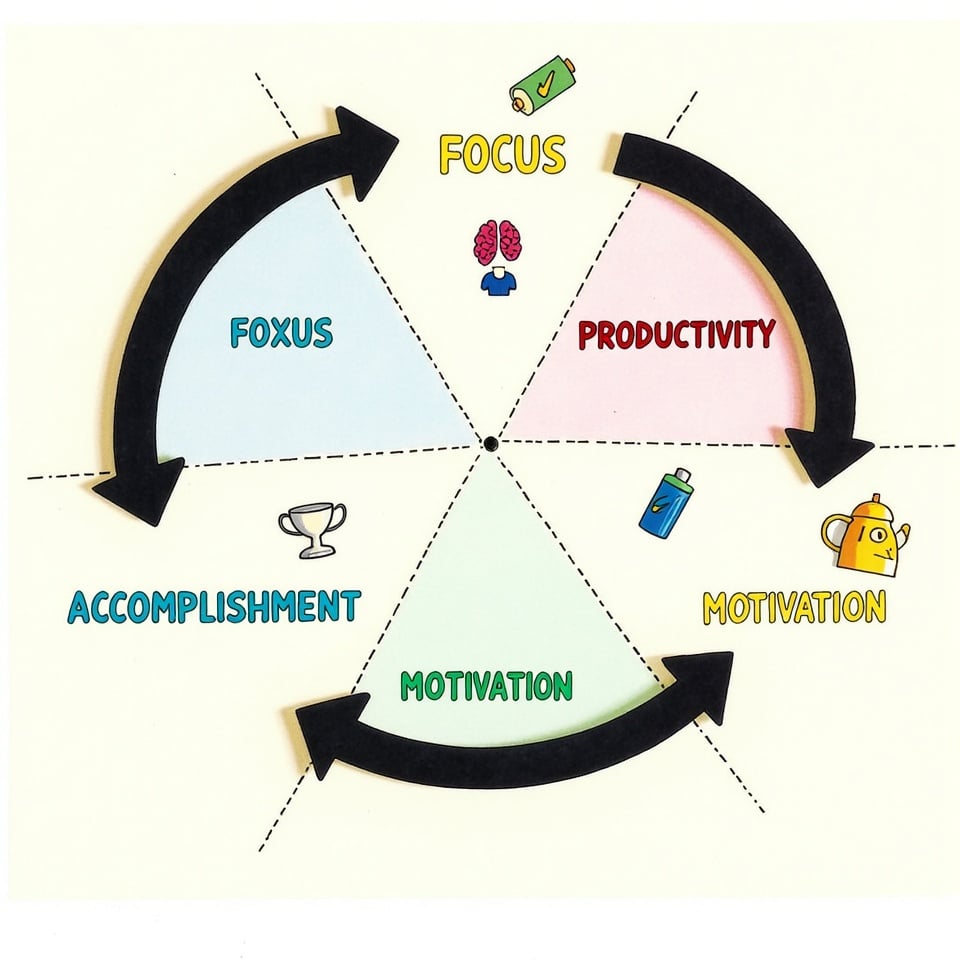Want to master compound sentences FAST?
You’re in the right place, and I’m about to show you exactly how.
The best part?
This comprehensive guide breaks down everything about compound sentences in 2025, and it’s written in plain English you can actually understand.
Look:
Most guides overwhelm you with complex grammar terms, but we’re keeping things simple and practical.
From basic structures to real-world examples, you’ll learn exactly how compound sentences work (and how to use them in your writing).
Ready to dive in?
Table of Contents
Ready to elevate your writing? Let’s dive in…
What is a Compound Sentence?
Let me break this down in simple terms:
A compound sentence is like a 2-in-1 deal – it combines two complete thoughts that could each stand on their own.
Here’s what I mean:
Take this sentence: “The sun was shining brightly, and the birds were singing in the trees.”
See what happened there?
- “The sun was shining brightly” (complete thought #1)
- “The birds were singing in the trees” (complete thought #2)
These two ideas are connected using one of the FANBOYS (For, And, Nor, But, Or, Yet, So).
In other words:
You’re taking two sentences that could live independently and joining them together like puzzle pieces.
It’s that simple.
Examples of a Compound Sentence
Let’s look at some real-world examples that’ll make this crystal clear:
Using FANBOYS (The Most Common Way):
- “The movie was entertaining, but the book was even better.”
- “I wanted to go for a run, yet it was raining heavily.”
- “She studied hard, so she aced the exam.”
Quick Tip: Notice how each part could be its own sentence? That’s the key.
Using Semicolons (The Professional Way):
- “The conference room was packed; every seat was taken.”
- “Time was running out; we had to act fast.”
Using Conjunctive Adverbs (The Fancy Way):
- “The experiment failed; however, the researchers gained valuable insights.”
- “The meeting ended early; therefore, we went for coffee.”
Want to see how these work in different situations?
In Academic Writing:
“The data supported our theory, and the results were published.”
In Creative Writing:
“The wind howled through trees, and the old house creaked.”
In Business Writing:
“Sales increased last quarter, but costs remained high.”
Pro Tip: Try reading these out loud. Hear how naturally they flow?
Remember: The best compound sentences don’t just connect ideas – they make your writing flow smoothly from one thought to the next.
Types of Compound Sentences
Let’s discuss different types of compound sentences.
Compound Sentences with Coordinating Conjunctions: This is the most common type of compound sentence.
It uses the FANBOYS conjunctions (For, And, Nor, But, Or, Yet, So) to join independent clauses.
Example: “The concert was sold out, but we managed to get tickets at the last minute.”
Compound Sentences with Semicolons: These sentences join two closely related independent clauses without using a conjunction.
Example: “The experiment was a success; the team’s hypothesis was confirmed.”
Compound Sentences with Conjunctive Adverbs: These use transitional words or phrases like “however,” “therefore,” “moreover,” or “consequently” to connect independent clauses.
Example: “The project deadline was extended; consequently, we had more time to refine our presentation.”
Compound-Complex Sentences: While not strictly a type of compound sentence, these combine elements of both compound and complex sentences. They contain two or more independent clauses and at least one dependent clause.
Example: “Although the weather was poor, we went to the beach, and we had a great time.”
Implied Compound Sentences: These sentences omit repeated words or phrases in the second clause to avoid redundancy.
Example: “Some students prefer online classes, others traditional classroom settings.” (The verb “prefer” is implied in the second clause)
Compound Sentences with Correlative Conjunctions: These use paired conjunctions like “either…or,” “neither…nor,” “not only…but also” to join independent clauses.
Example: “Not only did she ace the exam, but she also received a scholarship offer.”
Compound vs. Other Sentence Types
Comparing compound sentences to other sentence structures illuminates their distinctive features and applications.
By examining these differences, students and researchers can gain valuable insights into selecting and employing various sentence types for maximum effectiveness in their writing.
Compound vs. Simple Sentences:
Simple Sentence contains one independent clause.
Example: “The cat sleeps on the windowsill.”
Compound Sentence contains two or more independent clauses.
Example: “The cat sleeps on the windowsill, and the dog rests by the fireplace.”
The compound sentence provides more information and shows a relationship between two complete thoughts.
Compound vs. Complex Sentences:
Complex Sentence contains one independent clause and at least one dependent clause.
Example: “While the cat sleeps on the windowsill, the dog watches the birds outside.”
Compound Sentence contains two or more independent clauses.
Example: “The cat sleeps on the windowsill, but the dog prefers to watch the birds outside.”
Complex sentences show a hierarchical relationship between ideas, while compound sentences present ideas of equal importance.
Compound vs. Compound-Complex Sentences:
Compound-Complex sentence contains two or more independent clauses and at least one dependent clause.
Example: “Although the cat usually sleeps on the windowsill, today it’s curled up on the sofa, and the dog has taken its usual spot.”
Compound Sentence contains only independent clauses.
Example: “The cat usually sleeps on the windowsill, and the dog often rests by the fireplace.”
Compound-complex sentences allow for more intricate expression of ideas, combining the features of both compound and complex sentences.
Common Mistakes in Forming Compound Sentences
- Comma Splices is one of the most frequent errors is joining two independent clauses with just a comma, without a coordinating conjunction.
Incorrect: “The sun was setting, the temperature was dropping rapidly.”
Correct: “The sun was setting, and the temperature was dropping rapidly.”
- Run-on Sentences occur when two or more independent clauses are joined without proper punctuation or conjunctions.
Incorrect: “The experiment failed we need to start over.”
Correct: “The experiment failed; we need to start over.” or “The experiment failed, so we need to start over.”
- Misuse of Semicolons: Using a semicolon where a comma should be used, or vice versa.
Incorrect: “The research was comprehensive; but the conclusions were vague.”
Correct: “The research was comprehensive, but the conclusions were vague.”
- Overuse of Compound Sentences: While compound sentences are useful, overusing them can make writing repetitive and monotonous.
Repetitive: “The study was conducted over six months, and the results were analyzed carefully, and the findings were surprising.”
Improved: “The six-month study yielded carefully analyzed results, which were surprising.”
- Incorrect Coordinating Conjunction: Using a conjunction that doesn’t accurately represent the relationship between the clauses.
Incorrect: “The hypothesis was rejected, and the experiment was a success.”
Correct: “The hypothesis was rejected, but the experiment was still considered a success.”
- Unbalanced Clauses: Creating compound sentences where the ideas in the independent clauses are not logically related or of equal importance.
Awkward: “The library was quiet, and I forgot my umbrella.”
Improved: “The library was quiet, providing an ideal environment for studying.”
- Forgetting the Second Subject: Omitting the subject in the second independent clause when it’s different from the first.
Incorrect: “The professor presented the lecture, and then answered questions.”
Correct: “The professor presented the lecture, and she then answered questions.”
Points to Remember When Forming Compound Sentences
When crafting compound sentences, keep these key points in mind to ensure clarity, coherence, and grammatical correctness in your writing:
- Ensure that each part of your compound sentence can stand alone as a complete thought. This is the fundamental principle of compound sentences.
Example: “The research was extensive, and the findings were significant.”
- Choose the right coordinating conjunction (FANBOYS: For, And, Nor, But, Or, Yet, So) to express the relationship between your clauses accurately.
Example: “The hypothesis was rejected, yet the experiment provided valuable insights.”
- Use Proper Punctuation. Use a comma before the coordinating conjunction when joining two independent clauses. If using a semicolon, omit the conjunction.
Example: “The data was collected over six months; the analysis took an additional two months.”
- Ensure that the ideas in your compound sentence are logically related and of similar importance.
Example: “The literature review was comprehensive, and the methodology was rigorous.”
- While compound sentences are useful, mix them with other sentence types to maintain reader engagement and improve flow.
Example: “After reviewing the data, we reached a conclusion. Our hypothesis was confirmed, and new questions emerged for future research.”
- Avoid redundancy in compound sentences. If information can be combined more efficiently, consider doing so.
Instead of: “The participants were surveyed, and then their responses were analyzed.” Consider: “The participants’ survey responses were analyzed.”
- Maintain parallel structure in your compound sentences, especially when listing items or actions.
Example: “The researcher collected the data, analyzed the results, and published the findings.”
- Ensure that each clause has a clear subject and that verbs agree with their subjects, especially in longer compound sentences.
Example: “The experiment was successful, and its results were published in a peer-reviewed journal.”
- When appropriate, use transitional phrases to enhance the flow between clauses.
Example: “The initial results were promising; moreover, they opened up new avenues for further investigation.”
Consider your audience and the formality of your writing when deciding to use compound sentences. They can be particularly effective in academic and professional writing for expressing complex ideas succinctly.
Advanced Tips for Mastering Compound Sentences
For those looking to elevate their writing skills, here are some advanced tips for mastering compound sentences:
- Use compound sentences to highlight relationships between ideas. The order of clauses can affect emphasis.
Example: “The experiment failed, but valuable lessons were learned.” This emphasizes the positive outcome despite the initial setback.
- Vary the length of your independent clauses to create a pleasing rhythm in your writing.
Example: “The sun set slowly, painting the sky in vibrant hues, and night crept in silently.”
- In informal writing, you can sometimes omit repeated subjects for a more concise style.
Example: “She entered the lab, (she) conducted the experiment, and (she) recorded the results.”
- Use compound sentences to mimic natural speech patterns in dialogue, adding authenticity to characters.
Example: “I wanted to believe him, but something just didn’t add up.”
- Practice combining simple sentences into compound sentences to express ideas more efficiently.
Instead of: “The hypothesis was tested. The results were unexpected.” Try: “The hypothesis was tested, and the results were unexpected.”
- Use compound sentences for contrast, comparison, or cause-and-effect relationships to strengthen your arguments.
Example: “The evidence was compelling, yet the jury remained unconvinced.”
- Employ compound sentences as topic sentences to preview two main points of a paragraph.
Example: “The study had both strengths and limitations, and these factors significantly impacted the interpretation of results.”
- Explore less common coordinating devices like correlative conjunctions for sophisticated coordination.
Example: “Not only did the research break new ground, but it also challenged existing paradigms.”
- Master the nuanced use of semicolons, colons, and dashes in compound sentences for varied effects.
Example: “The results were clear: the treatment was effective, and side effects were minimal.”
- Use compound sentences in concluding statements to succinctly summarize dual aspects of your argument or findings.
Example: “The study confirmed the initial hypothesis, and it opened new avenues for future research.”
Conclusion
Compound sentences are game-changers for your writing, and here’s why:
They help you connect ideas smoothly, add variety to your sentences, and make your writing sound more professional.
The best part?
Once you understand the basics (which we covered in this guide), you’ll start using them naturally in your writing.
Look:
You don’t need to be a grammar expert to use compound sentences effectively. Just remember the key points we discussed, practice regularly, and watch your writing transform.
Here’s what to do next:
Start by identifying compound sentences in your everyday reading, then try creating your own. The more you practice, the more natural it becomes.
And remember: clear writing beats fancy writing every time.
Frequently Asked Questions about Compound Sentences
What are 5 examples of compound sentences?
- “The sun was shining brightly, and the birds were singing in the trees.”
- “I wanted to go for a walk, but it started raining heavily.”
- “She studied hard for the exam, so she felt confident about her performance.”
- “The movie was entertaining; however, the book was even better.”
- “You can choose the red car, or you can opt for the blue one.”
What is the difference between a compound and complex sentence?
The main difference lies in the types of clauses they contain and how these clauses are related:
Compound Sentence:
- Contains two or more independent clauses
- Clauses are of equal importance
- Joined by coordinating conjunctions, semicolons, or conjunctive adverbs Example: “The experiment was successful, and the results were published.”
Complex Sentence:
- Contains one independent clause and at least one dependent clause
- Clauses have a hierarchical relationship (main idea and supporting idea)
- Joined by subordinating conjunctions Example: “Although the experiment was challenging, the results were groundbreaking.”
How do you form a compound sentence using “so”?
To form a compound sentence using “so,” follow this structure: Independent Clause + , so + Independent Clause
The conjunction “so” is used to show a cause-and-effect relationship between the two clauses. Here are two examples:
- “The traffic was heavy, so we arrived late to the conference.”
- “The results were statistically significant, so the researchers decided to publish their findings.”
Remember to use a comma before “so” when it’s joining two independent clauses.
What are common mistakes to avoid when writing compound sentences?
Common mistakes in compound sentences include comma splices (joining independent clauses with only a comma), run-on sentences (lacking proper punctuation or conjunctions), misuse of semicolons, incorrect coordinating conjunctions, and unbalanced clauses.







